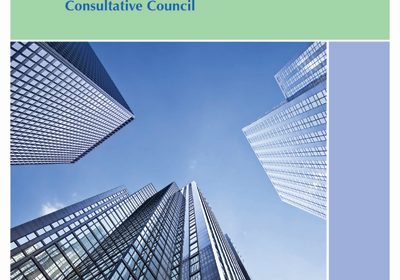The National Institute of Building Sciences 2013 report, Moving Forward: Findings and Recommendations from the Consultive Council, spans five key areas: The Building Workforce; Guidance on the Use of Non-Potable Water; Understanding the Energy/Water Nexus; Supporting the Existing State and Local Building Regulatory Infrastructure; and, Developing the Business Case for Private Sector Investment in Hazard Mitigation.
| Part of an annual report to Congress, Moving Forward was released during a High Performance Building Congressional Caucus Coalition. Copies can be obtained at www.nbis.org. |
Among recommendations in the eight-page document:
- Industry associations should develop and support Science, Technology, Engineering and Mathematics (STEM) education programs to prepare students for careers in the 21st century building industry;
- The U.S. Departments of Labor and Education, in consultation with building industry representatives and other construction community stakeholders, should develop a comprehensive national workforce plan;
- The Environmental Protection Agency (EPA) should set uniform national water quality criteria for end uses of non-potable water;
- The National Institute of Standards and Technology should develop water and energy industry-accepted evaluation, measurement and verification protocols that standards developers can utilize to help make determinations on provisions where water and energy tradeoffs exist;
- The Department of Energy (DOE) should compile a national database of embedded energy in water, and vice versa, with a focus on developing regional and local estimates needed for planning purposes;
- DOE and EPA, along with the Department of Homeland Security and Federal Emergency Management Administration; Department of Commerce, including the Economic Development Administration; and, Department of Housing and Urban Development should work together as well as with the private sector to identify economic, social and environmental benefits to communities that adopt and verify compliance with construction codes;
- All federal agencies should ensure that any grants they give to states and localities in support of community development, resilience, housing, planning, transportation, and related functions include prerequisites or other requirements focused on current building code adoption and compliance;
- Community ratings conducted for various purposes should be integrated and expanded to include development of community-wide resilience ratings that can be used to identify best practices; assist in awarding federal and state grants; and, support private-sector decision making, including insurance underwriting and financial investments; and,
- The NIBS Multihazard Mitigation Council, with support from the public and private sectors, should update the Natural Hazard Mitigation Saves report to address current savings and benefits that accrue to state and local governments and the private sector.
EPA TAGS BUILDER FOR LAX CONCRETE WASHOUT PLAN
Under an agreement with the Environmental Protection Agency, Rochester, N.Y., builder Atlantic Funding & Real Estate will pay a $50,000 penalty for stormwater control rule violations at its Gateway Landing development, and invest nearly $70,000 in a bioswale to filter silt and pollution from the site’s contaminated runoff into the Erie Canal.
Along with Atlantic Funding documents, EPA inspections of Gateway Landing sites in Greece and Gates, N.Y., revealed the builder was not properly following key stormwater pollution prevention plan parts.
Violations included failure to a) install a designated concrete washout area and perimeter silt fence prior to start of work; and, b) construct sediment basins and permanently stabilize drainage ditches with vegetation prior to road and building construction. The builder also violated stormwater discharge permit provisions, including the requirement to conduct site inspections according to the specified schedule, and properly amend a pollution prevention plan to minimize site discharges.
“Soil and pollutants carried by uncontrolled stormwater runoff can seriously damage our waterways. The legal settlement with Atlantic Funding will reduce stormwater runoff, protecting water quality in the Erie Canal,” notes EPA Regional Administrator Judith Enck.
More than one third of Gateway Landing’s 20,000-sq.-ft. bioswale will consist of a rain garden—a shallow, vegetated basin to collect and absorb rooftop, sidewalk and pavement runoff. EPA estimates the project will curtail stormwater conveyance by as much as 145,000 gallons a year.
The Clean Water Act requires developers of sites exceeding one acre to implement stormwater pollution prevention plans to keep soil and contaminants from running off into nearby waterways. EPA estimates the rate at which water carries soil and contaminants off construction sites is typically 10 to 20 times and 1,000 to 2,000 times greater than that from agricultural and forested lands, respectively.
